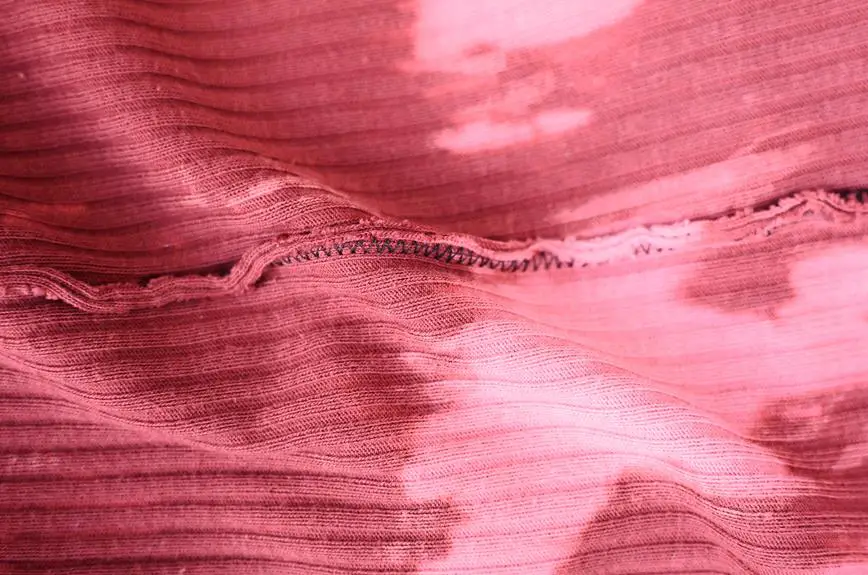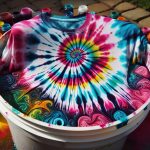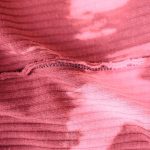Wondering which fabric dye reigns supreme: garment or pigment? This guide will provide you with a comprehensive comparison of both options, allowing you to make an informed decision based on your specific needs.
From the nuances of the garment dyeing process to the unique characteristics of pigment dye, you will gain mastery over the advantages and limitations of each method.
No need to rely on guesswork or trial and error—this objective exploration will equip you with the knowledge to confidently choose the best dye for your projects.
So, let's delve into the world of fabric dyeing and uncover the pros and cons of garment and pigment dyes.
Key Takeaways
- Garment dye provides a softer and more natural look compared to pigment dye.
- Pigment dye offers exceptional color saturation and long-lasting vibrancy.
- Pigment dye is known for its durability and strong adhesion to fabric fibers.
- Garment dye allows for a wider range of colors and variations.
Understanding Garment Dyeing Process
When you consider the garment dyeing process, it's essential to understand the specific techniques and methods involved in coloring the fabric. Fabric penetration and dye distribution are crucial factors in achieving an even and vibrant color. The dyeing process involves immersing the fabric in a dye bath, allowing the dye molecules to penetrate the fibers. The agitation and temperature control during this process play a significant role in ensuring uniform dye distribution.
Chemical reactions also take place during the garment dyeing process, contributing to color retention. The dye molecules chemically bond with the fabric molecules, creating a lasting and durable color. Understanding the chemistry behind these reactions is essential for achieving colorfastness, ensuring that the dyed fabric maintains its color intensity even after multiple washes.
Garment dyeing requires precision and expertise to achieve consistent results. From controlling the dye bath concentration to monitoring the dyeing time, every step influences the final outcome. Mastery of the garment dyeing process is essential for producing high-quality, colorfast fabrics that meet the standards of discerning consumers and industry professionals.
Exploring Pigment Dye Characteristics
When considering the characteristics of pigment dye, it's essential to explore its properties, durability, and colorfastness.
Understanding these aspects will provide you with valuable insight into the performance and longevity of pigment-dyed fabrics.
Pigment Dye Properties
What makes pigment dye unique compared to garment dye?
Pigment dyes are distinct due to their application process and color saturation. Pigment dye application involves the binding of color particles to the fabric's surface, resulting in a more opaque and textured appearance. This characteristic allows pigment dyes to work effectively on a variety of fabric types, including synthetic fibers.
Additionally, pigment dyes offer exceptional color saturation, producing vibrant and long-lasting hues. The colors achieved with pigment dyes often have a rich and deep quality, making them ideal for achieving a more vintage or worn-in look.
Furthermore, pigment dyes are known for their ability to retain their color vibrancy even after numerous washes, maintaining the garment's appearance over time. These properties make pigment dye a popular choice for those seeking durable and vivid color results.
Durability and Colorfastness
To assess the durability and colorfastness of pigment dyes, consider their ability to maintain vibrant hues and resist fading, making them a favorable choice for long-lasting color retention.
Pigment dyes exhibit excellent durability due to their ability to bond with the fabric's fibers, resulting in colors that are less prone to fading during washing or exposure to light. This durability makes pigment dyes well-suited for items that undergo frequent laundering or are regularly exposed to sunlight.
Additionally, pigment dyes often demonstrate superior colorfastness compared to other dye types, ensuring that the fabric maintains its original color intensity over extended periods. This characteristic is particularly beneficial for garments or textiles that require long-term color vibrancy, making pigment dyes a reliable choice for achieving lasting and vibrant color results.
Pros and Cons of Garment Dye
You should weigh the advantages and disadvantages of garment dye before making your fabric dye decision.
Garment dye offers several pros. Firstly, it provides a softer, more natural look and feel compared to pigment dye, as it penetrates the fabric's fibers, resulting in a more muted and lived-in color palette. Additionally, garment dye allows for a wider range of colors and variations, providing a unique and individualized appearance to each garment. Moreover, it's known for its excellent colorfastness, meaning the colors are less likely to fade or bleed after washing, resulting in long-lasting vibrancy.
On the other hand, garment dye does have its cons. While it offers a soft and natural look, it may also result in uneven dye penetration, leading to variations in color intensity across the fabric. Furthermore, the durability of garment dye may be slightly compromised as the dyeing process can weaken the fabric fibers.
It's essential to consider these factors when deciding whether garment dye is the best choice for your project.
Advantages and Limitations of Pigment Dye
When considering pigment dye, it's important to weigh its advantages and limitations.
Pigment dye is known for its durability, making it a reliable choice for long-lasting color.
Additionally, the color vibrancy and depth achieved with pigment dye can be impressive, and it offers versatility in working with various fabric types.
Durability of Pigment Dye
One can appreciate the durability of pigment dye, which outlasts many other dye types due to its ability to adhere strongly to fabric fibers. The longevity of pigment dye is evident in its resistance to fading, making it an attractive option for those seeking long-lasting color vibrancy in their garments.
When comparing durability, pigment dye exhibits the following advantages and limitations:
- Color Fastness: Pigment dye is known for its exceptional color fastness, resisting fading even after multiple washes and prolonged exposure to sunlight.
- Abrasion Resistance: The strong adhesion of pigment dye to fabric fibers provides excellent abrasion resistance, ensuring that the color remains intact even with frequent wear and washing.
- Limitation in Fabric Variety: Pigment dye may not be suitable for all fabric types, as it requires specific fabric properties to adhere effectively.
- Less Penetration: While pigment dye offers superior surface adhesion, it doesn't penetrate the fabric as deeply as some other dye types, potentially impacting the hand feel of the fabric.
Color Vibrancy and Depth
The pigment dye offers vibrant and deep colors, but its limitations in penetrating the fabric may affect the overall feel of the garment. Color saturation and dye penetration are key aspects of pigment dye.
The pigments in this dye sit on the fabric's surface, resulting in intense and vivid colors. However, due to the limited penetration, the colors may not have the same depth as garment dye. Additionally, pigment dye may not offer the same level of light fastness and color retention as garment dye.
While the colors initially appear rich, they may fade over time with repeated washing and exposure to sunlight. It's important to consider these factors when choosing between pigment and garment dye, as they directly impact the vibrancy and longevity of the colors in your fabrics.
Versatility in Fabric Types
You can appreciate the versatility of pigment dye across a wide range of fabric types, but its limitations in deeply bonding with certain materials should be considered. Here are some key points to consider:
- Versatility benefits: Pigment dye can be used on various fabric types including cotton, linen, rayon, and synthetic fibers, providing a wide range of options for creating colorful and vibrant designs.
- Fabric compatibility limitations: However, pigment dye may not bond well with certain synthetic fabrics or materials treated with water-repellent finishes, resulting in less colorfastness and potential color bleeding.
- Understanding the specific fabric properties and dyeing requirements is crucial when working with pigment dye to ensure optimal results.
- While pigment dye offers versatility, it's essential to carefully assess fabric compatibility to avoid potential limitations and ensure the best dyeing outcomes.
Application Techniques for Garment Dye
Achieve vibrant and long-lasting color by applying garment dye using the immersion method. This technique involves fully submerging the fabric in a dye bath, allowing for uniform color penetration. Before dye application, ensure proper fabric preparation by washing and thoroughly drying it to remove any finishes or impurities that may hinder dye absorption. Selecting the appropriate dye color is crucial, as the original fabric color will impact the final result. When mixing the dye, carefully follow the manufacturer's instructions to achieve the desired shade and depth of color. Consistent agitation during the dyeing process is essential to ensure even color distribution.
After immersing the fabric, closely monitor the dyeing time and temperature to achieve consistent and reliable results. Once the fabric reaches the desired color intensity, remove it from the dye bath and thoroughly rinse to remove excess dye. Finally, wash the dyed fabric separately to ensure any remaining dye is removed and to prevent color bleeding.
Mastering the immersion method for garment dye application will allow you to achieve professional and vibrant results on a wide range of fabrics.
Tips for Successful Pigment Dyeing
To maximize pigment dyeing success, prioritize thorough fabric preparation and precise pigment application.
Follow these tips for successful pigment dyeing:
- Fabric Preparation:
- Ensure the fabric is clean and free of any finishes or coatings that could impede the pigment from adhering properly.
- Pre-wash the fabric using a mild detergent to remove any sizing or residues that could affect the dye's absorption.
- Color Formulation:
- Take the time to accurately measure and mix the pigment dye according to the manufacturer's instructions. Consistency is key to achieving uniform coloration.
- Pigment Dye Techniques:
- Experiment with different application methods such as brushing, spraying, or padding to determine which technique yields the best results for the specific fabric and desired effect.
- Application Precision:
- Apply the pigment dye evenly and consistently, ensuring complete saturation of the fabric. Pay attention to details and take your time to avoid uneven coloring or splotches.
Frequently Asked Questions
Can Garment Dyeing Be Used on All Types of Fabric, or Are There Limitations to the Types of Materials That Can Be Dyed?
You can use garment dyeing on many fabric types, but there are limitations. Natural fibers like cotton and linen are ideal, while synthetics may not dye as effectively. Consider environmental impact when choosing the dyeing process.
What Are Some Common Mistakes or Errors to Avoid When Using Pigment Dye for Fabric?
When using pigment dye for fabric, common mistakes to avoid include improper fabric preparation, inadequate temperature control, and color bleeding. To achieve success, ensure proper fabric preparation, control the temperature, and prevent color bleeding.
Are There Any Environmental or Sustainability Considerations to Keep in Mind When Choosing Between Garment Dye and Pigment Dye?
When considering fabric dye options, it's essential to weigh their environmental impact. Garment dyeing often uses less water and energy, while pigment dyeing can be more sustainable with proper waste management. Sustainable practices are crucial.
How Does the Cost of Garment Dyeing Compare to the Cost of Pigment Dyeing, Especially When Factoring in the Longevity of the Color?
When comparing the cost of garment dyeing to pigment dyeing, consider the longevity of color. Garment dyeing may have higher upfront costs, but its color lasts longer, potentially making it more cost-effective in the long run.
Are There Any Special Care Instructions or Maintenance Tips for Garments or Fabrics That Have Been Dyed Using Either the Garment Dye or Pigment Dye Process?
For fabric dyed with either process, special care and maintenance tips are essential to preserve longevity and color fastness. Properly follow care instructions for garment or pigment dyed fabrics to maintain the dye's vibrancy and durability.
- Tetron Fabric for Marine Applications: Durability and Use Cases - June 18, 2025
- Tetron Fabric for Outdoor Furniture: Weather Resistance and Care - June 18, 2025
- Tetron Fabric for Wall Coverings: Style and Application Tips - June 18, 2025






